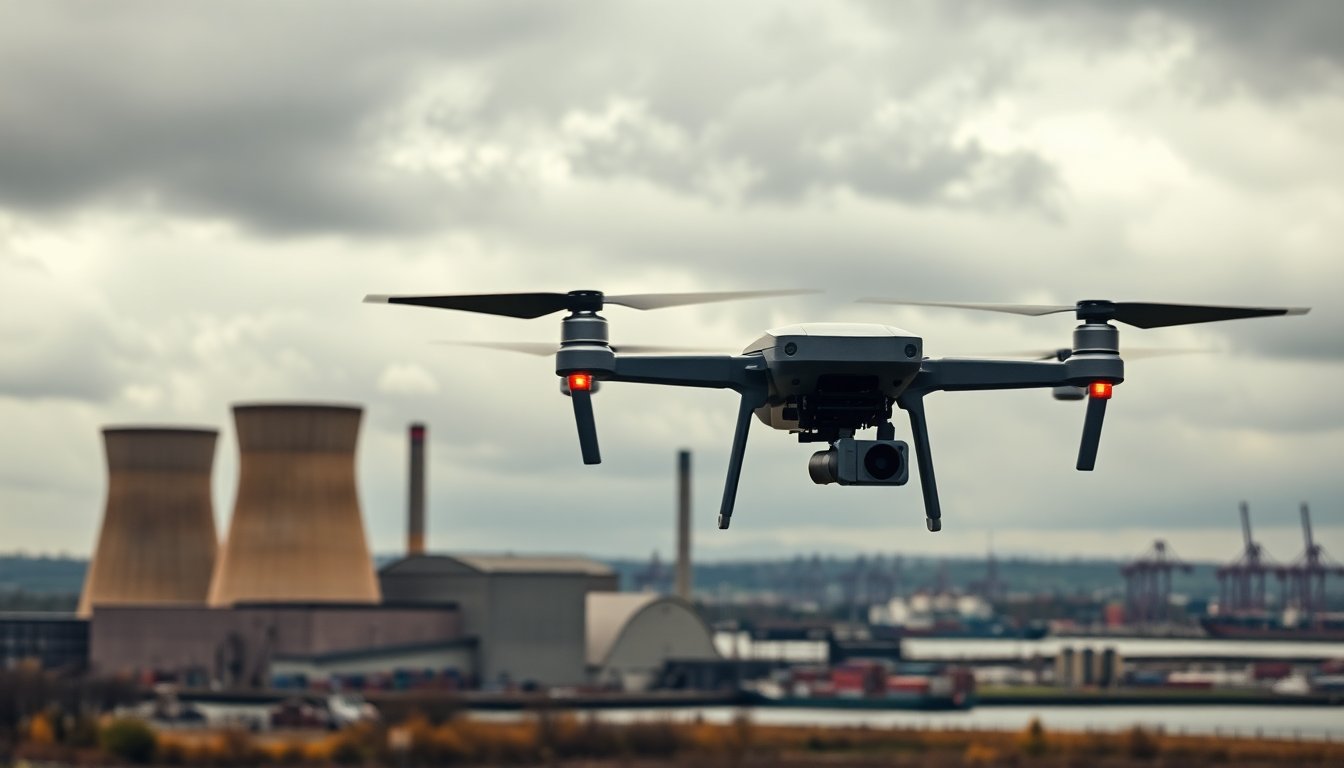Table of Contents
Belgium has recently become a focal point for escalating drone-related incidents, raising serious concerns among security officials. The situation intensified when drones were spotted over the Doel nuclear power plant near the Port of Antwerp, prompting increased vigilance from authorities.
With numerous drone sightings occurring over critical infrastructure throughout Europe, Belgium has attracted significant international attention and action.
These drone activities have led to multiple airport closures across Belgium, stranding thousands of passengers and disrupting air traffic. This trend is not unique to Belgium; it reflects a broader pattern of drone encounters reported across Europe, particularly around military installations and airports.
Some officials suspect Russian involvement, prompting urgent responses from both national and international security agencies.
Heightened security measures
In response to these incidents, Belgium has sought assistance from its allies. Following a significant closure of Brussels Airport due to drone sightings, the British military announced plans to deploy experts and resources to enhance Belgium’s defense capabilities against these aerial threats.
Richard Knighton, head of the UK’s armed forces, confirmed this collaboration, highlighting the importance of addressing risks posed by unidentified drones in the region.
Simultaneously, Liège Airport, which mainly serves cargo flights, has faced multiple operational suspensions due to similar drone sightings.
These incidents have resonated throughout Europe, with Germany also dealing with drone-related disruptions, including an event that grounded numerous flights at Munich Airport. German defense minister Boris Pistorius has attributed these incidents to potential Russian provocations.
Geopolitical context
The circumstances surrounding these drone sightings are complex and closely linked to ongoing geopolitical tensions.
Recent discussions among German officials suggested that Belgium’s targeting may relate to the contentious debate over utilizing frozen Russian assets to support Ukraine. As Pistorius noted, these drone activities appear to remind Belgium of the precariousness of its financial decisions regarding support for Ukraine.
The Kremlin has strongly denied any connection to the drone incidents, dismissing the accusations as unfounded and part of a broader pattern of scapegoating aimed at Russia. This denial underscores the rising rhetoric surrounding national security and international relations, as countries navigate the complexities of modern warfare.
International responses
The frequency and intensity of drone sightings in Europe have alarmed experts, including Guiseppe Spatafora from the EU Institute for Security Studies. Spatafora notes that while direct evidence linking these incidents to Russia may be hard to find, a distinct pattern is emerging: countries that support Ukraine or are considering assistance have become targets for drone activities.
Following a significant incident in Denmark, where air traffic was halted due to drone sightings, officials began to recognize the sophisticated nature of these operations. The Danish Prime Minister characterized it as one of the most serious threats to national infrastructure, emphasizing the need for robust countermeasures. Authorities have acknowledged that drone operators are capable of executing complex flight patterns, prompting a reevaluation of operational protocols for responding to such threats.
Future considerations
As NATO steps up surveillance and aerial patrols in Eastern Europe, the challenge remains to effectively counter the agile and relatively inexpensive nature of drones. Capt. Joel, a NATO aircraft commander, emphasized the need to adapt monitoring systems to differentiate between larger aircraft and smaller drones. The urgency to enhance detection capabilities reflects the evolving landscape of aerial threats.
Looking to the future, European Union officials are advocating for a comprehensive strategy known as a “drone wall” to strengthen the region’s defenses by 2027. However, experts like Jacob Funk Kirkegaard caution that while such initiatives are ambitious, they require careful consideration of operational risks, particularly in urban environments where public safety is critical. The dilemma of neutralizing a suspicious drone without endangering civilians remains a significant challenge in real-time scenarios.





